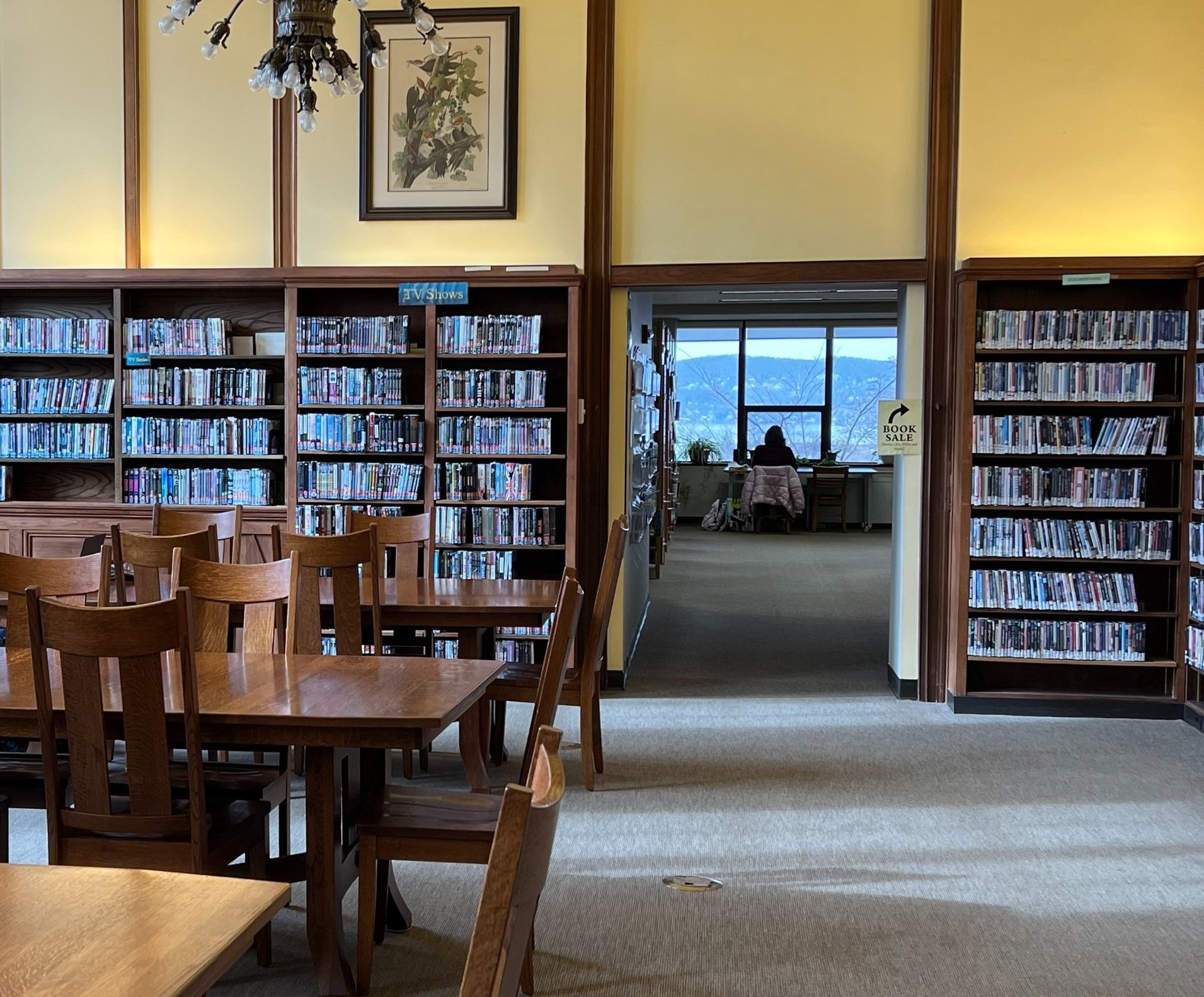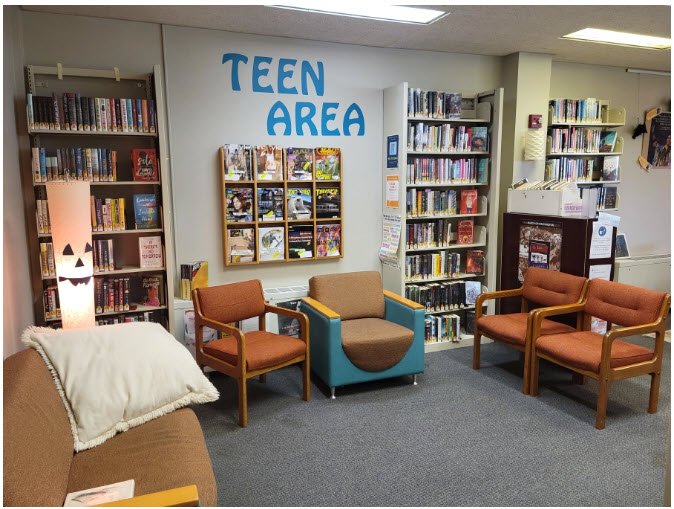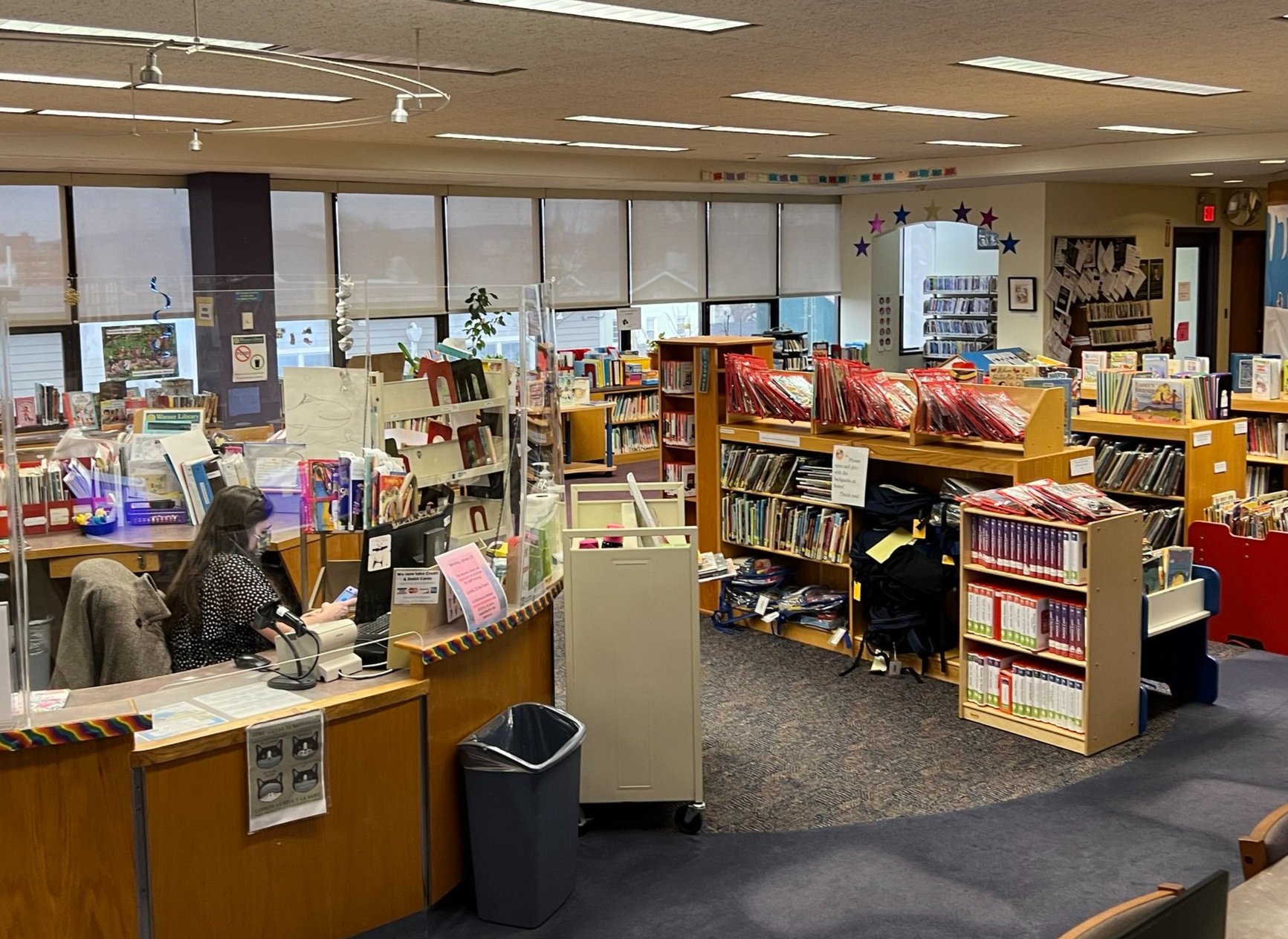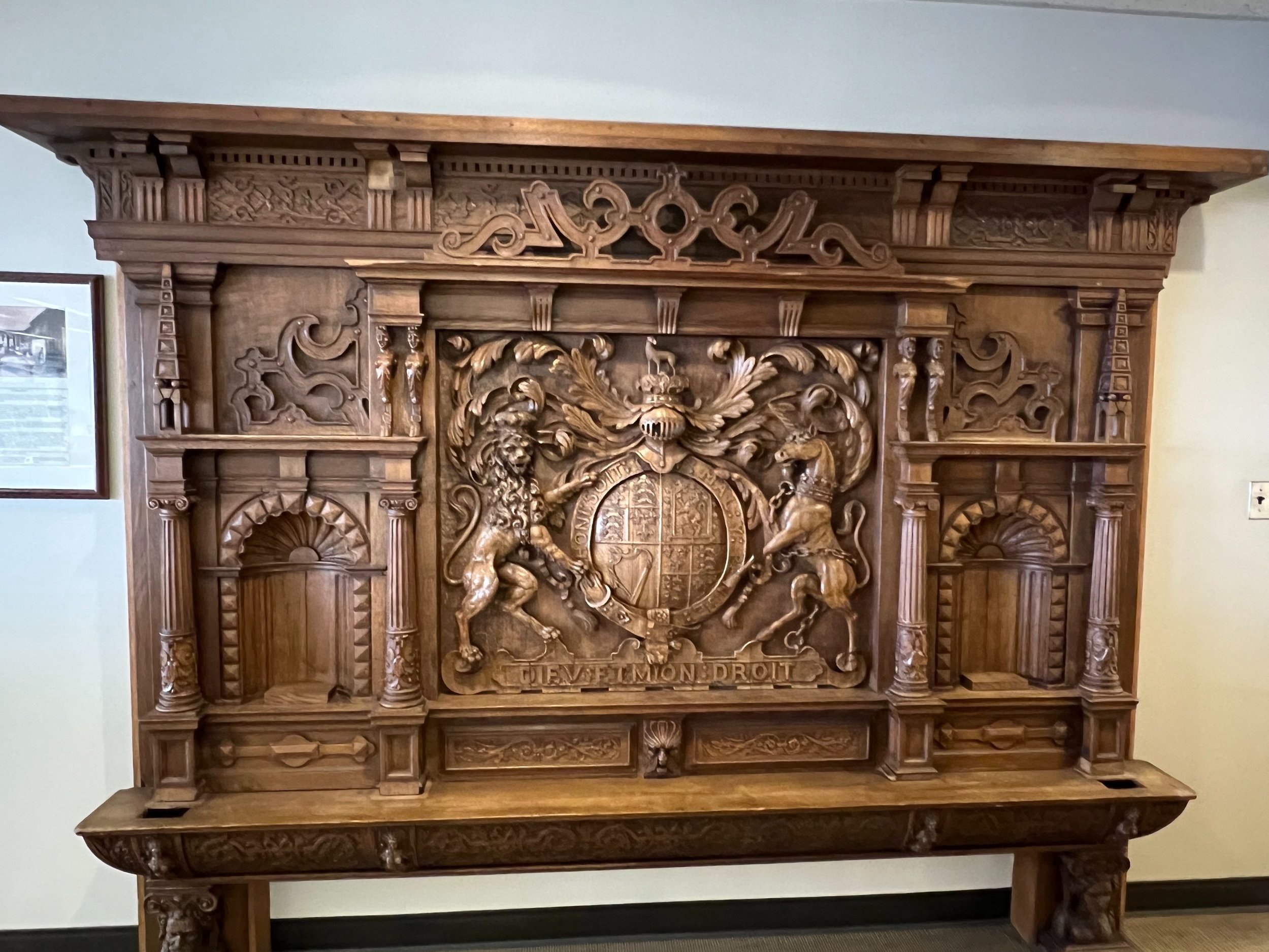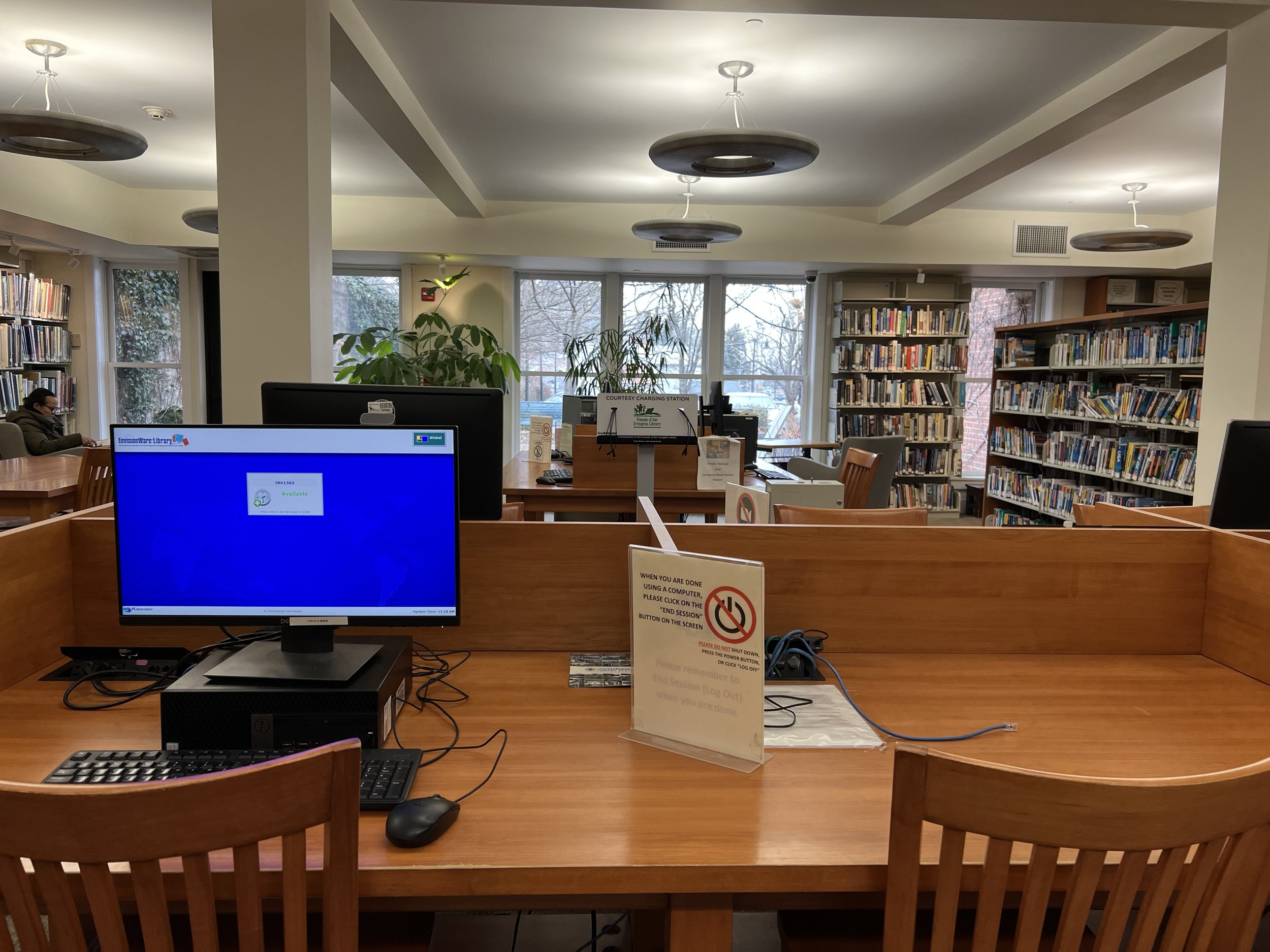Read entire article for free!
Hastings-on-Hudson Public Library
In each Rivertown stands a building that beckons all residents: the public library. It is a community gathering place that is free for students of all ages. “Our library is often described by people in our village as ‘the jewel of the community,’” notes Rosemarie Gatzek, director of the Irvington Public Library.
The Rivertowns’ libraries were founded in the twentieth century as the villages evolved into suburban communities. Foresighted residents gathered to organize reading rooms, the forerunners of the modern library. Today, libraries are acknowledged for their essential contribution to their communities to advance literacy and as centers for neighborhood activities and information.
Read articles from current and all previous issues of The Neighborhood Buzz: Rivertowns, plus receive a printed copy of the magazine every 3 months.
A Place to Read and Discover
In contemporary and historic structures, the Rivertowns’ libraries—which are members of the Westchester Library System—provide a place to read, study, attend an event, or view an exhibit.
Above the village’s business district sits the Ardsley Public Library in an airy, modern building completed in 1984. Since its inception in 1922, the library existed in various forms and at different locations, and then not at all between 1942 to 1971, until the village purchased the property on American Legion Drive. The library’s size was doubled in 1993 with the addition of a children’s wing funded by the Thomas and Agnes Carvel Foundation. Since 2006, the Ardsley Public Library has been serving the residents of Elmsford.
Read articles from current and all previous issues of The Neighborhood Buzz: Rivertowns, plus receive a printed copy of the magazine every 3 months.
On lower Main Street stands the Dobbs Ferry Public Library. This modern edifice was completed in 2003 and is adjacent to the building that housed the earliest library in the village. From 1899 to 1909, the Dobbs Ferry Free Library and Reading Room occupied the parlor of the Pearce family house. The library’s second home at the top of Main Street lasted nearly a century, from 1909 to 2002, in a structure that was owned and later donated to the village by local benefactors Colonel and Mrs. Franklin Q. Brown.
From its bluff above the Hudson River, the Hastings-on-Hudson Public Library affords patrons impressive views of the Palisades from its massive picture windows. Organized in 1913, the library occupied the second floor of village hall, currently the Hook & Ladder Company on upper Main Street. In 1929, the library moved to what is today a courtroom in the new Municipal Building on Maple Avenue. Requiring more space, the library settled into its current facility in Fulton Park in 1966, courtesy of village benefactor Helen Andrus Benedict. Since 2001, the library has been expanded twice.
Read articles from current and all previous issues of The Neighborhood Buzz: Rivertowns, plus receive a printed copy of the magazine every 3 months.
The Irvington Public Library moved into the historic Burnham building that fronts the Hudson River in 2000. The library began in 1902 when local philanthropist Helen Gould Shepard gave Irvington $10,000 to decorate the Tiffany Reading Room with the work of Louis Comfort Tiffany. Located within the newly built village hall, the reading room contained a reference collection amidst turtleback lanterns and bright mosaics. The Tiffany Reading Room was restored in 2012 and is among the few Tiffany interiors to remain intact.
On the border of Tarrytown and Sleepy Hollow is the Warner Library, which serves both villages. Dedicated in 1929, it was the gift of philanthropists Mr. and Mrs. Worcester Reed Warner who resided in Wilson Park. The Warner Library succeeded the Young Men’s Lyceum, which began as a reading room in 1866. Built of Vermont limestone in neo-classic Grecian style, the structure is distinguished by its front door that sports a 1,000-pound bronze panel, which the Warners shipped to New York during their tour of Florence, Italy.
Read articles from current and all previous issues of The Neighborhood Buzz: Rivertowns, plus receive a printed copy of the magazine every 3 months.
Collections, Resources, and Services
Tiffany Reading Room in Irvington (Photo by Peter Aaron and Meredith Shamburger.)
Clearly, the greatest resources in these libraries is their collection of books. “Our patrons often comment on much they like our selections, and patrons who like graphic novels are especially happy with our special collection of these,” says Gatzek. She adds, “Our Children’s Room can get quite busy and our programs for children are very popular.”
As technology has evolved, however, the libraries have become more than a place to find a good book or to research information and have expanded to offer additional resources and services. Today’s modern library collection includes ebooks, audiobooks, and periodicals as well as DVDs, Blu-rays, and CDs.
Dobbs Ferry Library from 1909 to 2002.
Services include access to computers and printers as well as to photocopiers. The Dobbs Ferry library maintains a small Makerspace with a 3D printer that is available upon request. Other services, which might not be thought to be offered by libraries, include museum passes, notary public service, and passport processing. The libraries’ meeting rooms may be reserved for community group functions.
In addition to its collections and services, the libraries partner with local organizations, including schools, to develop free exhibits, events, lectures, and art displays. The Irvington library collaborates with Learning Together Irvington, an organization formed by parents during the Covid-19 lockdown, to move their successful online chess club to an in-person program at the library. Library staff often work with the Rivertowns’ historical societies on programs that showcase local history.
Read articles from current and all previous issues of The Neighborhood Buzz: Rivertowns, plus receive a printed copy of the magazine every 3 months.
Dobbs Ferry Public Library
The Rivertowns’ libraries are essential parts of their communities because they offer “space for everyone to come seven days a week. People have access to information and entertainment in a variety of formats and we offer programs to all age groups. We have WiFi and computer access. All of this is done for free,” says Dobbs Ferry library director Erik Carlson. Likewise, the Hastings-on-Hudson library states on its webpage: “The Hastings-on-Hudson Public Library is a nexus of knowledge, engagement, and access. We serve as what sociologists define as a ‘third place’—one of those destinations, neither home nor work, where people exchange ideas, forge relationships, and strengthen their sense of community.” The Warner Library notes on its webpage that it is “here for every person in our communities to use.”
Relevance in the Digital Age
Irvington Public Library
In its October 19, 2021, edition, the Washington Post posed the question, “What is the role of a library in today’s digital age?” The library’s role has expanded to provide more digital resources. “This includes downloadable books and audiobooks for patrons to borrow, and streaming services like Hoopla and Kanopy,” states Carlson.
The role of the librarian also has changed in the digital age. Gatzek concedes that they “spend more time walking patrons through how to download the online resources we offer. We are called on much more for training and tech support than we were 20 years ago.”
Efforts also continue to digitize collections held within the libraries. Gatzek explains, “The most successful project so far has been the digitization of the Irvington Gazette,” (https://news.hrvh.org/veridian/?a=cl&cl=CL1&sp=firv&) which was published from 1907 to 1969.
Read articles from current and all previous issues of The Neighborhood Buzz: Rivertowns, plus receive a printed copy of the magazine every 3 months.
Looking Ahead
Today the Rivertowns’ libraries are more dynamic and professional than when they began as reading rooms and are a vital cultural addition to each village. The libraries strive to stay current to provide their patrons with the means to support new technologies.
Leatherwork by Anthony Radomski - Ardsley Public Library
Support also comes from the Friends organizations at each library that bolster their operating budgets and allow them to reach a wider audience with more resources and programming. Carlson explains, “Without the Friends, we would not be able to provide half the programming we do now.” Gatzek adds, “Through their fundraising efforts, we have the money to offer high-quality programming.” Gatzek further states that the Friends “fund our efforts in presenting materials from our local history collection online, paying for staff training and equipment as we endeavor to digitize our collection.” The Friends of the Hastings Public Library has been working since 1958 to raise funds for the library through memberships and used book sales. In Ardsley, the library’s Friends was founded in 1971.
The Rivertowns’ libraries owe thanks to those residents who had the foresight to establish these institutions and to the current staff and Friends who keep it going. In the modern era, public libraries grapple with the task of staying relevant in the digital age and, according to the Library Journal, “adapting quickly to a changing landscape.” They remain, however, vital resources that engage the community, places for quiet study and contemplation, and venues for local exhibits and events.
A Brief History of American Libraries
The earliest libraries in the United States were established as the country developed from agrarian communities into industrial metropolises. According to the American Library Association, the title of first library in America is contested between three institutions. In 1731, Benjamin Franklin founded the Library Company of Philadelphia, which was administered by subscription and thus supported by its members. In 1833, the first municipally funded library that was free to patrons opened in Peterborough, New Hampshire. The Boston Public Library, a large municipal library, was founded in 1848. Although public libraries date to ancient times, it was not until the nineteenth century that a library’s budget was accepted as a legitimate use of public funds and one that was enabled through legislation.




















